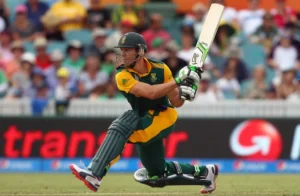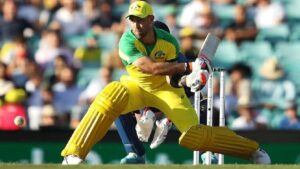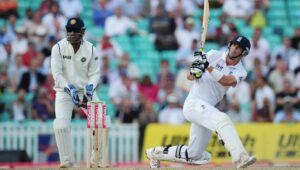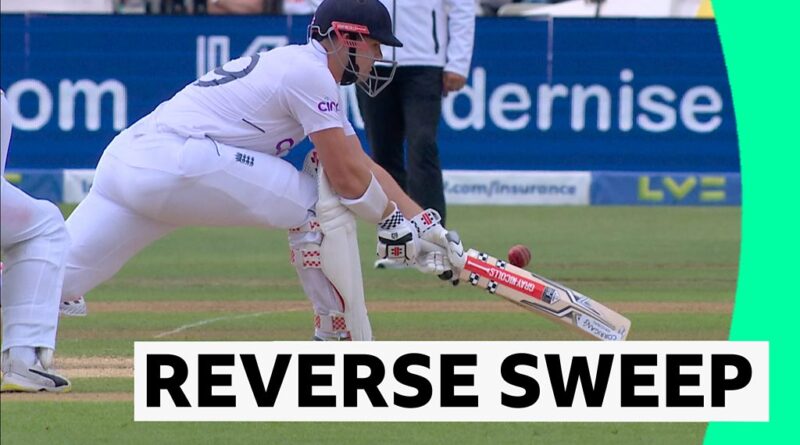Reverse Sweep: A Shot That Changed Cricket
Cricket has always been a game of innovation, constantly evolving with new techniques, strategies, and styles. Among these innovations, the reverse sweep is a game-changing shot that adds flair, excitement, and a tactical edge to modern cricket. This unconventional stroke has not only enthralled fans but has also become an essential tool in the arsenal of many top batsmen.
The Origin of the Reverse Sweep:
In this shot, the batsman switches his hands and stance to play the ball on the opposite side of his normal play. While its exact origins are unclear, it’s widely believed that Pakistani batsman Mushtaq Mohammad was among the first to play the shot in the 1970s.
However, English batsman Mike Gatting famously brought the shot into the limelight during the 1987 Cricket World Cup. Despite getting out to the shot in a crucial match against Australia, Gatting’s audacious attempt showcased the potential.
The Mechanics of the Reverse Sweep:
Executing a reverse sweep requires skill, timing, and precision. The batsman must quickly adjust his grip, reverse his stance, and play the ball with the back of the bat. The key to a successful shot lies in maintaining balance and eye coordination. Batsmen often use this shot to exploit field placements and find gaps, particularly against spinners who have packed the off-side field.
Statistical Impact:
The reverse sweep has significantly impacted scoring rates in modern cricket. In One Day Internationals (ODIs) and Twenty20 (T20) formats, where run rates are crucial, the reverse sweep offers a way to score boundaries and rotate the strike effectively.
According to ESPNcricinfo‘s Statsguru, since the early 2000s, players who frequently use the reverse sweep have maintained higher strike rates. For instance, AB de Villiers, known for his innovative stroke play, has a career strike rate of 101.09 in ODIs and 135.17 in T20s, with the reverse sweep being a significant part of his career.
Masters of the Reverse Sweep:
Several players have mastered the reverse sweep, making it an integral part of their batting strategy. Here are some of the best exponents of this shot:
1. AB de Villiers

AB de Villiers is often referred to as Mr. 360 for his ability to play shots all around the ground. His innovative approach to batting, including the reverse sweep, has made him one of the most feared batsmen in limited-overs cricket.
De Villiers’ reverse sweep is not just a run-scoring shot but a statement of his aggressive intent. His reverse sweeps have often turned matches in South Africa’s Favor, particularly in ODIs and T20s.
2. Andy flower

Andy Flower’s reverse sweep was a hallmark of his batting genius, showcasing his innovation and precision. Masterfully executed, it allowed him to manipulate field placements and disrupt bowlers’ strategies.
This high-risk, high-reward shot added versatility to his game, influencing a generation of cricketers to adopt more creative approaches. Flower’s legacy includes both his prolific runs and his pioneering shot-making techniques.
3. Glenn Maxwell

Australian all-rounder Glenn Maxwell is another player renowned for his audacious stroke play. The reverse sweep is one of his signature shots, allowing him to manipulate field placements and score quickly.
Maxwell’s fearless approach and skill with the reverse sweep have made him a valuable asset in T20 leagues worldwide. Maxwell’s ability to execute reverse sweeps under pressure has won several matches for his teams in the IPL and Australia.
4. Joe Root

England’s Test captain Joe Root has adapted the reverse sweep to great effect in all formats. His ability to play the shot with finesse and precision, even against quality spin bowling, has been instrumental in his success.
Root’s reverse sweeps often come at crucial moments, helping to shift the momentum in his team’s favor. his consistent use of this shot in Test cricket has made him one of the most versatile batsmen of his generation.
5. Kevin Pietersen

Kevin Pietersen was one of the pioneers of the reverse sweep in the modern game. His audacious use of the shot against some of the world’s best bowlers, including his famous encounters with Shane Warne and Muttiah Muralitharan, showcased his fearless and innovative batting style. Pietersen’s reverse sweeps added an extra dimension to his already explosive batting.
Memorable Moments Involving the Reverse Sweep:
1. AB de Villiers vs. West Indies (2015)
In an ODI match in 2015, AB de Villiers smashed a 31-ball century against the West Indies, showcasing his full range of strokes, including several reverse sweeps. This innings is widely regarded as one of the greatest displays of innovative batting in cricket history. De Villiers’ reverse sweeps were instrumental in his record-breaking knock, leaving the West Indies bowlers helpless.
2. Kevin Pietersen vs. Sri Lanka (2006)
Kevin Pietersen’s reverse sweeps against Sri Lankan spinner Muttiah Muralitharan during England’s 2006 tour of Sri Lanka are legendary. Pietersen’s fearless approach and ability to play the shots against one of the greatest spinners of all time were pivotal in England’s success. His reverse sweeps disrupted Muralitharan’s rhythm and helped England secure a famous victory.
3. Eoin Morgan vs. Afghanistan (2019)
In the 2019 Cricket World Cup, Eoin Morgan’s explosive century against Afghanistan included several reverse sweeps. Morgan’s innovative stroke play helped England set a daunting total, which ultimately led to a comprehensive victory. His shots in that inning demonstrated his ability to adapt and innovate under pressure.
A Tactical Innovation:
The reverse sweep is not just about flair; it’s a tactical innovation. Batsmen use it to exploit field placements, especially when the fielding team has packed the off-side. By playing the reverse sweep, batsmen can find gaps in the field, rotate the strike, and disrupt the bowler’s line and length. This strategic use of the shot has made it an invaluable tool in the modern game.
Modern Cricket and Future Trends:
Today, the reverse sweep is a common sight in all formats of the game. It has evolved from a risky, unconventional shot to a mainstream tactic used by batsmen to unsettle bowlers and exploit field placements. The shot’s popularity is a testament to the changing nature of cricket, where innovation and aggression are increasingly rewarded.
With coaching techniques improving and players constantly seeking new ways to innovate, the reverse sweep will remain a critical part of modern batting strategies. Future generations of cricketers will undoubtedly refine and enhance this shot, making it even more effective.
Conclusion:
The reverse sweep has undoubtedly changed the way cricket is played. It has added a new dimension to batting, offering batsmen a creative way to score runs and challenge bowlers.
As the game continues to evolve, the reverse sweep will remain a symbol of cricket’s innovative spirit, reminding us that sometimes, taking risks and thinking outside the box can lead to great rewards. The players who have mastered this shot have not only entertained fans but have also pushed the boundaries of what is possible in cricket, making the reverse sweep a lasting legacy in the sport’s history.
